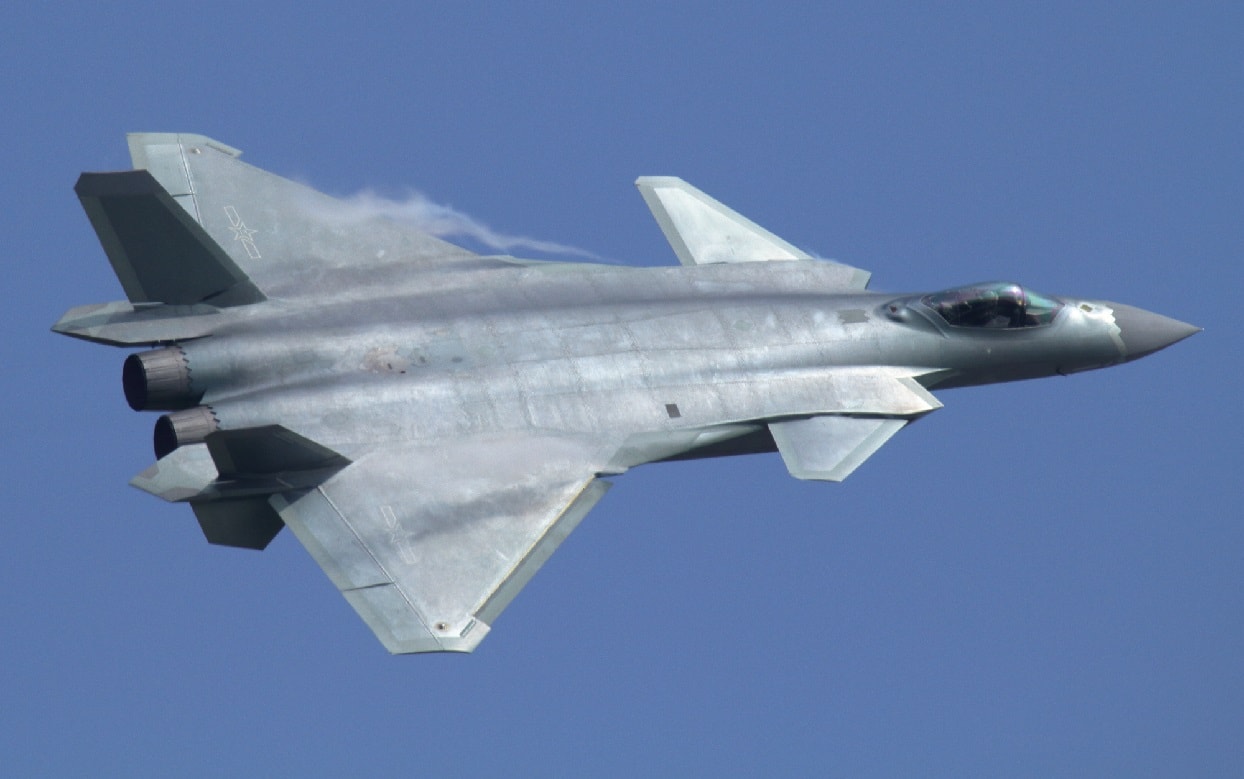Key Points: The J-20 Mighty Dragon is one of China’s most advanced aircraft. Despite this, in a one-on-one confrontation with an F-22 or F-35, the J-20 would most likely lose. However, even though it is technically inferior to its American counterparts, the J-20 is gaining a critical advantage: numbers.
With production rates set to reach 120 airframes per year in 2025, the J-20 could very soon outproduce the F-35 in overall numbers.
More J-20 Fighters are Coming
The J-20’s production ramp-up can be attributed to several factors. Firstly, China has invested heavily in its aerospace industry, particularly in facilities capable of producing advanced fighter jets. The Chengdu Aircraft Industry Group, responsible for the J-20, has expanded its production lines and improved manufacturing processes to meet the high demand.
Secondly, the development of indigenous engines, such as the WS-10C and the more advanced WS-15, has reduced China’s reliance on foreign technology and allowed for more consistent production rates. These engines are crucial for the J-20’s performance and have enabled China to produce the aircraft at a faster pace.
Throughout the Cold War, China was unable to produce jet engines for itself, relying heavily on international partners. Now, China is able to domestically produce everything it needs, a significant step up from the last several decades.
Additionally, China has optimized its production processes through the use of advanced manufacturing techniques and automation. This has not only increased the speed of production but also allegedly improved the quality and consistency of the aircraft. The J-20 is also a key component of China’s military modernization efforts.
The Chinese government has prioritized the production of the J-20 to enhance its air force’s capabilities, leading to increased funding and resources allocated to its production.
F-35 and F-22 Should Worry over J-20
The rapid production and deployment of the J-20 should worry many people in the Pentagon.
At the current rate of production, China could field as many as 30 brigades of stealth aircraft by the end of this decade. According to testimony by U.S. Indo-Pacific Command, China may surpass the U.S. Air Force in sheer numbers. “The magnitude, scope, and scale of this security challenge cannot be understated; all would be challenged,” Navy Adm. John C. Aquilino said, referring to China’s military buildup.
The saving grace is that the majority of China’s aircraft are still older frames like the J-7, a copy of the Soviet MiG-21. The J-11 and J-16, copies of the USSR’s Su-27 Flanker, also comprise a large portion of the CCP’s air force. China still has a way to go before it can completely replace its older legacy models with newer frames. However, with the introduction of the J-10 and J-20, China’s air force has been modernizing at a rapid rate. As China’s industry matures further, it will replace its older aircraft at a quicker rate.
The J-20 is designed to achieve air superiority with its stealth capabilities, advanced avionics, and long-range missiles. Its deployment in large numbers could challenge the air dominance traditionally held by the United States and its allies in the Asia-Pacific region.
The increased presence of J-20s in the region could significantly shift the balance of power. This is an especially bleak possibility for smaller countries like the Philippines or Taiwan, which already face immense pressure from China.
China Is a Player in Stealth Fighter Game
The J-20’s capabilities allow it to perform a variety of roles, including air-to-air combat, ground attack, and reconnaissance. This flexibility enhances China’s ability to project power and respond to various threats, complicating the strategic calculations of the United States and its allies.
The sheer number of J-20s being produced and deployed serves as a deterrent to potential adversaries.
It also enhances China’s influence in the region, as neighboring countries may seek to align more closely with China to avoid conflict. The J-20’s advanced features, such as its stealth design and sophisticated avionics, bring it closer to the capabilities of the U.S. F-22 and F-35.
This technological parity reduces the qualitative edge that the United States has traditionally enjoyed.
The Chengdu J-20, is a fifth-generation multirole stealth fighter developed by the Chengdu Aircraft Industry Group (CAIG) for the People’s Liberation Army Air Force (PLAAF) of China.
The development of the J-20 began in the late 1990s under the J-XX program, with CAIG selected as the prime contractor in 2008. The J-20 features a blended fuselage and V-shaped tail, designed for stealth and high-speed performance.

Image of J-20 Stealth Fighter. Image Credit: Creative Commons.
The J-20 is not the only new Chinese aircraft that the U.S. needs to worry about. The CCP has also been working on serial production of the J-35, China’s take on the F-35.
Additionally, the J-36 has been making more and more public appearances in recent months, testifying further to China’s rapidly modernizing aerospace industry.
This development should instill fear in many U.S. defense officials and encourage the USAF to keep up, lest it risks allowing China to outpace America.
About the Author: Isaac Seitz
Isaac Seitz, a 19FortyFive Defense Columnist, graduated from Patrick Henry College’s Strategic Intelligence and National Security program. He has also studied Russian at Middlebury Language Schools and has worked as an intelligence Analyst in the private sector.

